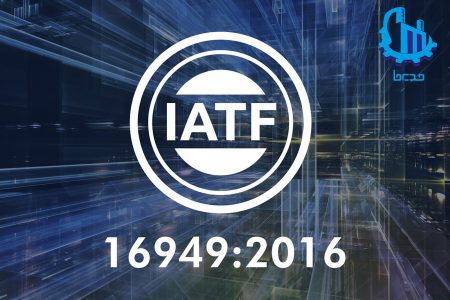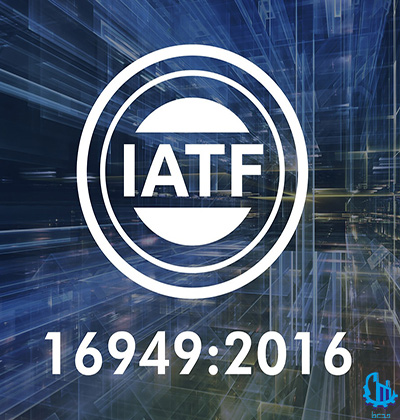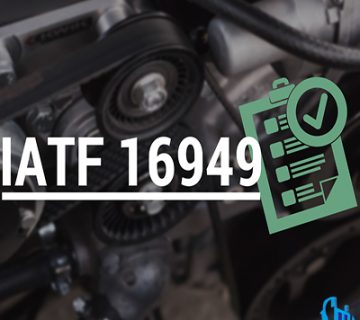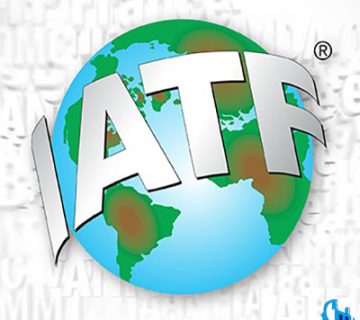
The perspective of implementing a quality management system and verifying it according to IATF16949: 2016 can seem overwhelming. If you’re not sure where to start, follow along for an overview of the 12 steps needed to successfully standard implement IATF16949.
IATF16949 standard implementation steps
1. Get support from management:
At the outset, you need to work with your sales side to top management to show them that implementing IATF16949 is important to your business. Without their support, your standard implementation will fail.
2. Specify the requirements of the quality management system:
You should identify each of the requirements that are considered in the quality management system. Obviously, these activities include not only the requirements of the IATF16949 standard, but also the rules and regulations and requirements related to your company’s culture.
3. Define the domain:
The domain of your system refers to its boundaries. That is, which places, which processes, which departments are included in your quality management system. The scope can be your entire company, but often this is not necessary, as you do not want to include areas of your organization that do not affect your quality management.
4. Define your steps:
You must define the procedures that comply with the IATF16949:2016 standard as well as any additional processes or steps that your company has in place to ensure consistency and quality. The important thing is to define all your work processes and see how they interact in your organization, this is where problems tend to arise.
5. Implement these processes and procedures:
Now you have to implement all these steps. Most likely, some of these have already been implemented. To meet the new standards, they must be modified.

6. Provide access to education and awareness programs:
A quality management system is only as effective as the employees who work within it. If they are not aware of your quality management system or how they fit into the system, they are not expected to follow new trends. Make sure you provide training on the quality management system standard in the automotive industry, its benefits to the company and employees, and any changes to employee processes.
7. Choose the right certifying organization:
The choice of certification body can be almost as important as all the activities performed. The certification body has the responsibility of entering your company to audit your quality management system and determine whether it meets the requirements of the IATF 16949 standard: 2016 does it match or not, is it effective or does it show if it is effective or not? You’ll want to talk to several certification bodies and review their references before making a decision.
8. Implement the quality management system and collect records:
You have implemented your new and updated procedures, so now you need to spend some time working with the quality management system to collect records. These records will be needed in the certification audit to prove that your processes are effective, meet the requirements for them, and improve as needed. The certification body tells you how much it believes you need to do before the QMS considers you mature enough.
9. Do an internal audit:
But, before the certification body arrives, you should first audit your processes internally. This is your chance to verify that each process is doing what it’s supposed to do, and if there are any problems, you can use your corrective action process to fix them.
10. Do a management review:
It’s not enough for your management to show support while implementing IATF 16949 – they must also be involved in maintaining the quality management system. It is management’s responsibility to review the required data and results from QMS activities to verify that each process has the resources it needs to be effective and demonstrate progress.
11. Take corrective measures:
If a problem is found during record collection, internal audit, or management review, you should investigate the root cause and take action to correct it. This is your primary method for ensuring continuous improvement, which is a core feature of an IATF 16949-certified quality management system.
12. Certification audit:
After completing the previous 11 steps, when you feel ready, the certification body will come into your organization to conduct a certification audit. This first involves comparing your quality management system programs, processes and procedures with the requirements of the IATF16949:2016 standard. If any gaps are found and reported by the auditor, you must address them and show evidence of their correction.
Next, once you’ve operated your system for the required amount of time, the auditors will return for a major audit, when they’ll compare the records they’ve collected against your plans as well as standard requirements.
They want to see if you have taken care of any non-conformities found when operating your quality management system, during internal audits or in management reviews. In one week, the audit team will submit a report showing their report and recommending the necessary corrective actions.
Once these are addressed, and the auditors are satisfied that your quality management system meets the requirements, they will recommend approval.
Benefits of implementing the IATF16949 standard
Obtaining the IATF16949 standard has many benefits for your organization.






No views